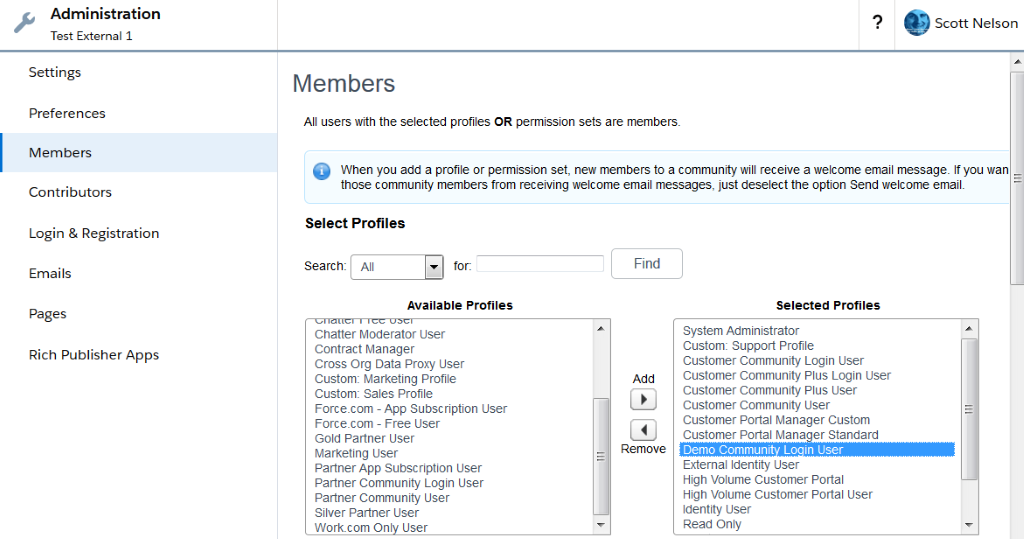Salesforce Communities are a really cool way to interact with your customers in the context of your product or service. Like most good portal products, it has a lot more features than most people will ever use. The upside to that is if you think of something you think your portal should have, odds are pretty good it does. The downside is that it can sometimes be onerous find all of the details you need to make something work. Community Self-Registration is just such a feature. While I can describe the details in under a page (with the two screens removed and linking to one page of documentation directly from Salesforce), it took me three hours of reading blog posts, user community threads and Trailhead training entries to get all of these steps down and working. To make sure I had it all correct, I then spent 20 minutes repeating the process in a different org from scratch and writing up this article.
With all that said, here are the steps laid out for your convenience:
Step 1: Create the account you will use for assigning users to. This should be an account specifically for this purpose for ease of reporting and managing accounts.
Step 2: Make sure your profile has a role (the default Developer org does not have one assigned).
Step 3: Clone the Customer Community Login User profile for the profile you will use for community members that self-register.
Step 4: From Setup, open the community from All Communities > Workspaces. Go to Administration and Members and add all profiles that should have access to the community, including the one you just created (you may need to use the All option from the dropdown for them to show).

Remember to scroll to the bottom of the page and click Save when done.
Step 5: Now you can follow the instructions to use the configurable self-reg page for easy sign-up, but before you test your login, make sure that you have activated your community from the Workspaces > Administration > Settings page.
Like what you see?

Scott Nelson is a Senior Technical Director at Primitive Logic. Scott is a seasoned IT leader and agent of change with over 20 years of experience working with the full delivery life cycle of solutions for system integration, process automation, and human workflow applications. He is also deeply experienced working with enterprises in need of guidance through complex changes, and has a long track record of managing digital transformation, expansion and stabilization initiatives.

